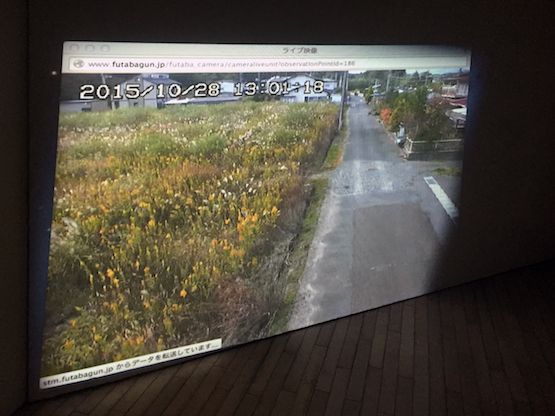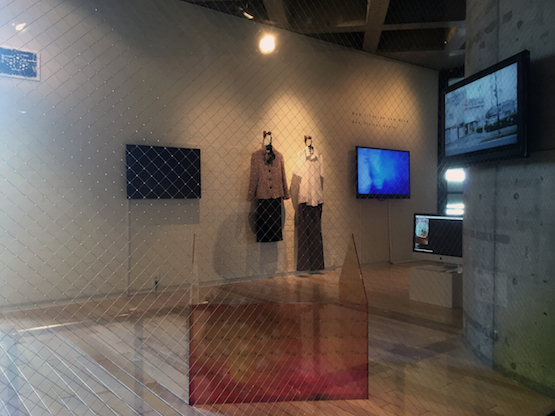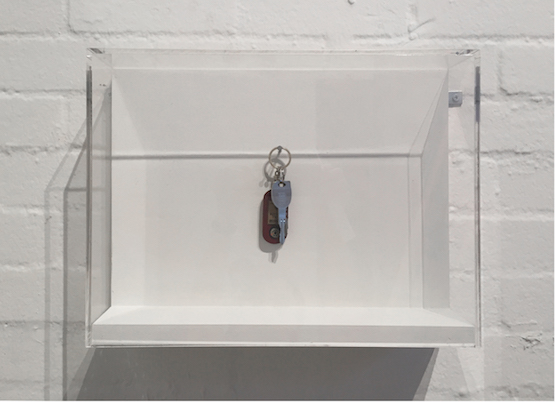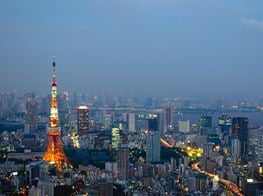'Don’t Follow the Wind – Non-Visitor Center' at Tokyo’s WATARI-UM
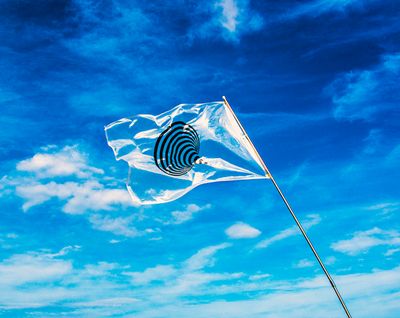
Printed flag with exhibition logo – Don’t Follow the Wind, 2015. Courtesy: WATARI-UM, The Watari Museum of Contemporary Art, Tokyo
Don't Follow the Wind — Non-Visitor Center at Tokyo's WATARI-UM (the Watari Museum of Contemporary Art) was an exhibition about an exhibition you're unlikely to ever see. The WATARI-UM show is to date the only way of viewing the Chim↑Pom initiated project Don't Follow the Wind, an exhibition spread throughout the 20km exclusion zone surrounding the nuclear facility Fukushima Daiichi in Japan, crippled on 11 March, 2011.
The ongoing nuclear accident has fundamentally changed the surrounding landscape. What remains is an area in stasis, the ongoing existence of which is ambiguous. As specific sites are prepared for the gradual return of people, questions remain over what the future holds for the sites, and the communities that may return to rebuild their lives within or around them.
In 2012, the Japanese artist collective Chim↑Pom entered the exclusion zone and install a series of artworks within sites that remain inaccessible. Their project draws attention to the isolation of the area within the zone and uncovers a way of discussing issues that until now, have been largely ignored both globally as well as locally. Contributions came from Ai Weiwei, radical performance group Grand Guignol Mirai, Nikolaus Hirsch and Jorge Otero-Pailos, Meiro Koizumi, Eva and Franco Mattes, Aiko Miyanaga, Ahmet Öğüt, Trevor Paglen, Taryn Simon, Nobuaki Takekawa and Kota Takeuchi. The musuem's Non-Visitor Center exhibition also featured works by director Sion Sono, Naohiro Ukawa and Tsubasa Kato that don't figure as part of Don't Follow the Wind in Tohoku.
Curated by Kubota Kenji, Jason Waite, and Eva and Franco Mattes, the Don't Follow the Wind exhibition involves each artist producing a work installed in locations dotted throughout the zone—exact locations remain a secret—and only accessible once the exclusion zone has been lifted. As imagined, it may take a while for this to happen. Until then, the nature of each piece is shrouded in mystery with a chance they may never been seen. The present radiation and surrounding fear make this chance relatively immeasurable.
In the wake of an ever-present and invisible threat, a strange sense of normality has settled in. Misreported facts, mishandled waste material from the power plant and systematically collected topsoil mean few know what the disaster means in real terms. Will the zone ever be safe, and will the edge of zoned contamination evolve as time goes by?
The WATARI-UM exhibition raised some of these questions with a mixture of factual information and speculative fiction using collection materials that informed how the ongoing exhibition would evolve and how it would be perceived from afar. In the video installation 22:19:43—23:04:40, 2015, by film director Sion Sono. A lengthy web chat shown in real time on the top floor of the WATARI-UM was a document of the three-way conversation had between curators in Tokyo, Milan and Berlin. It book-ended the Non-Visitor Center exhibition and acted as an introduction to Don't Follow the Wind, linking ideas with artefacts that are dotted throughout the museum.
For Ryuta Ushiro of Chim↑Pom, the threat is countered by work—sensitively placed throughout the zone, with each piece asking questions of its own. His impression is that both the site 'interior' and the works they house contain their own presence, asking questions such as, 'Do you hear me, do you know me, do you follow me, do you understand me?'
The same web chat revealed how some work traces the physical impact of materiality. Paglen's sculptural piece Trinity Cube, 2015, fuses glass formed from the sand of America's first Atomic test site and mixes it with shattered window panes found from within the exhibition site/exclusion zone, melted to form one piece that touches on the short-term experimentation of nuclear technology and the long-term social and environmental impact that technology creates. Eva Mattes also mentions how other similar sites around the world have become 'Involuntary Parks'; places bereft of people that have been designated National Parks and sites of natural importance.
Elsewhere, live video-feeds gave glimpses into streets and towns that now lie dormant. It was strangely voyeuristic and unsettling. Everything was seen from behind glass as if to underline that separation. The third floor collected fragments from_Don't Follow the Wind_ itself. It was inaccessible and only visible from behind glass, seen from a makeshift mezzanine floor—_The Non-Visitor Center Interpretation Station.
However, the biggest distance was the detachment that both television and the computer screen created and how seeing the artworks this way alluded to swapping one reality for another. It was difficult to fully engage with the exhibition beyond the museum—both the problem and challenge that _Don't Follow the Win_d and Non-Visitor Center knowingly face. How do you show work that can't be seen and will more than likely remain hidden forever? The whole of the WATARI-UM museum became the temporary space of a waiting room and departure lounge that highlighted the frustration of being so close and yet so far from the real work itself. A good example of this were the keys taken from four remote venues, Key of the venue, 2015. In the event they remain inaccessible, they'll be donated to neighbouring Iwaki City Art Museum along with an archive of the entire project. Sitting alongside applications for temporary access to the zone, this may be one of the most poignant views that the WATARI-UM's Non-Visitor Center offers.
With distractions in Tokyo ever present, a show this sensitive could easily have been mistaken for a comprehensive overview of Don't Follow the Wind. That would be impossible and curators and artists alike acknowledged this to be so. Instead Non-Visitor Center outlined the former exhibition by sharing the idea that any threat of radiation is far more dangerous than radiation itself, and impossible to truly register.—[O]
Don't Follow the Wind is an ongoing project and exhibition.

